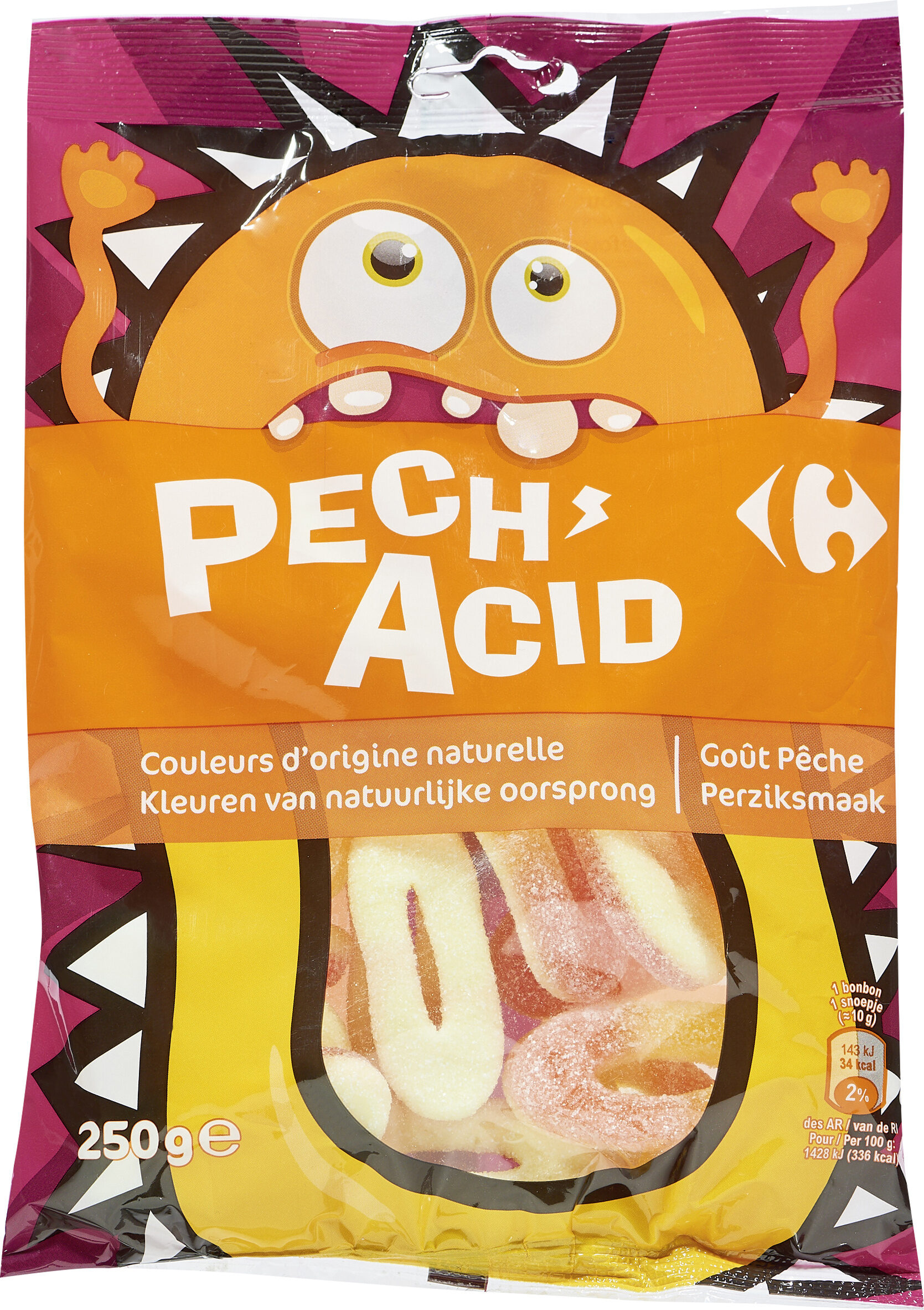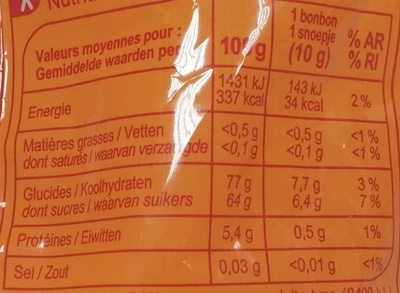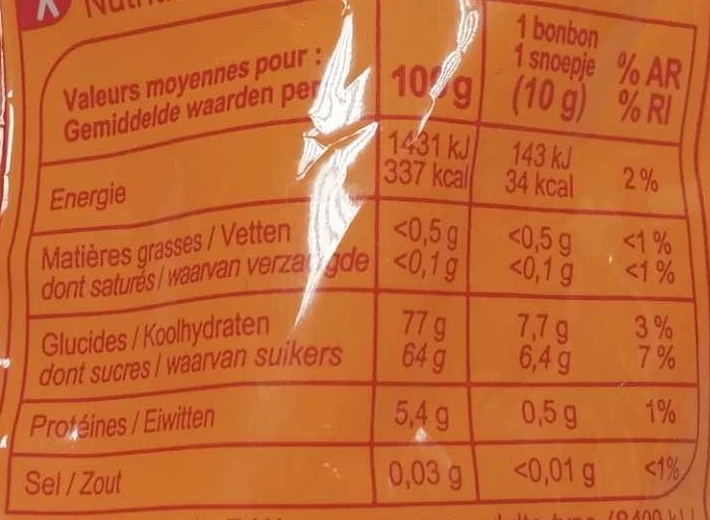Peach' ACID - Carrefour - 250 g
This product page is not complete. You can help to complete it by editing it and adding more data from the photos we have, or by taking more photos using the app for Android or iPhone/iPad. Thank you!
×
Some of the data for this product has been provided directly by the manufacturer Carrefour.
Barra-kodea: 3560070821082 (EAN / EAN-13)
Izen arrunta: Confiseries gélifiées aromatisées acidulées (goût pêche).
Kopurua: 250 g
Ontziratzea: en:Plastic, en:Bag
Markak: Carrefour
Kategoriak: en:Snacks, en:Sweet snacks, en:Confectioneries, en:Candies, en:Gummi candies
Etiketak, ziurtagiriak, sariak: en:Made in Belgium, en:Natural flavors
Producer: Fabriqué en Belgique par Astra Sweets N.V., Bleukenlaan 18, 2300 Turnhout pour Interdis.
Manufacturing or processing places: Belgique
Dendak: Carrefour, carrefour.fr
Matching with your preferences
Ingurumena
Carbon footprint
Ontziratzea
Transportation
Other information
Other information: 250g e Les couleurs d'origine naturelle proviennent des colorants (carmins et curcumine). Couleurs d'origine naturelle
Conservation conditions: À conserver à l'abri de l'humidité et de la chaleur (entre 18°C et 25°C). Pour une dégustation optimale, à consommer de préférence avant fin / N° de lot : voir au dos du sachet.
Customer service: Interdis - TSA 91431 - 91343 MASSY Cedex - France.
Report a problem
Datuen iturria
Product added on by basileus
Last edit of product page on by kiliweb.
Produktuaren orria -gatik editatua carrefour, driveoff, ecoscore-impact-estimator, org-carrefour, packbot, quechoisir, tacite-mass-editor, teolemon.










